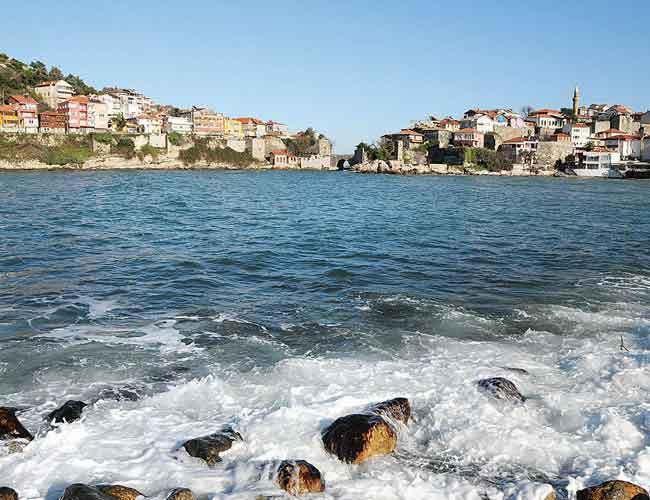
Rescue excavations carried out on the land and underwater ruins in the ancient port town of Amasra, now a district in the northern province of Bartın, which has a history dating back 5,000 years, are planned to be offered for
tourism.
Thought to have been built during the early Bronze Age, Amasra had its heyday around the 12th century B.C. under the rule of the princess Amastrist, as part the Phoenicians’ colonial life built along the shores.
Research conducted on the artifacts found during the foundation excavations in the district, which is known to host numerous artifacts from the Hellenistic, Roman, Byzantine, Genoese, Seljuk and Ottoman periods, reveal magnificent buildings from ancient history.
Half of the buildings in the ancient town are thought to be under areas that are today not settled.
In the district, official excavations are ongoing in the Bedesten location, while another study in the district focuses on the ruins that were sunken in the sea and the accidentally excavated artifacts found on land. Upon completion of the project they will be offered to
cultural tourism.
Ancient port town under sea
Amasra Museum Director Baran Aydın said buildings of high quality were built in the district, which ranges from ancient theatres, bazaars, fountains, aqueducts, parliament buildings and religious areas.
Although many artifacts are excavated from the Hellenistic and Roman eras in the district, Aydın said they believe an important section of the most ancient parts of the town lie under the water.
“We know there is an ancient town under the places where there is no settlement today and we also come across important artifacts during the foundation excavations. In these excavations, which is done under the supervision of our directorate, many structures ranging from a Byzantine era building, which is thought to have been a supply room, Roman era bath houses, meeting rooms and houses with special mosaic floors have come to light,” he added.
“We estimate that the town’s population was up to 50,000 during the Roman times, whereas today it is just 6,000. This shows that the settlement spread over a large area. Amasra was an ancient port town and it is very likely that there are also important ruins under the water. So we initially conducted an aerial survey on the small port and just like the artifacts on land, we started noting on the digital map the wall foundations that we saw in the sea. Next year, we will continue the survey excavation studies on the other areas in Amasra with regard to the foundlings under water,” Aydın said.
Ancient port
Aydın also detailed some of the traces of history that could be uncovered in underwater excavations.
“We have come across the ruins such as piers, small storages, port ruins, sunken ships, and anchors. It may be possible to see buildings that have sunken many meters under the water and traces of a sunken city, just like the buildings that sunk into water during the Aug. 17, 1999 earthquake in the Marmara Sea,” he said.
Aydın said they may be able to reveal ruins more clearly by using a cleaning system that sucks sand on the seabed from various underwater research ships.
One of the most significant examples of this method was during excavations of the ancient Theodosius Port in Yenikapı for the Marmaray sea tunnel in Istanbul, during which 37 ship ruins dating from the 5th to the 11th century Byzantine period were found under water.